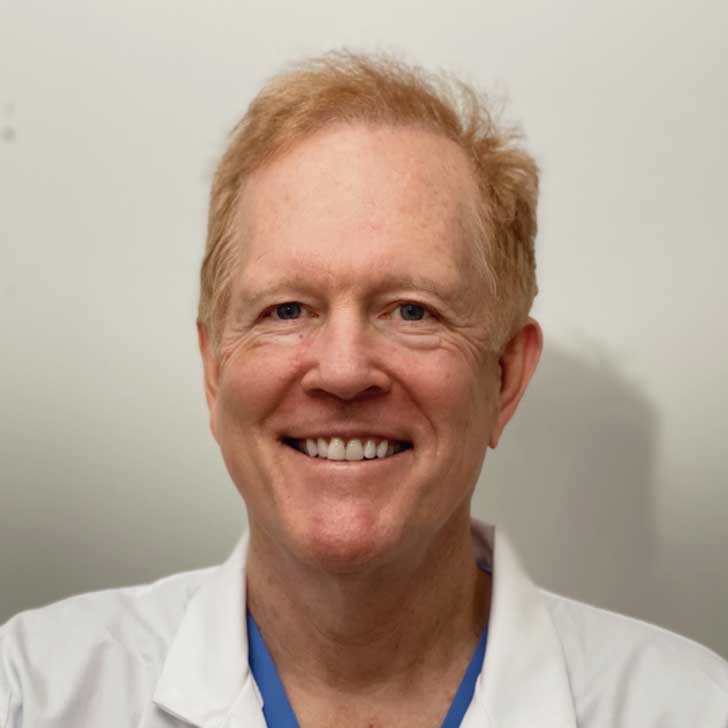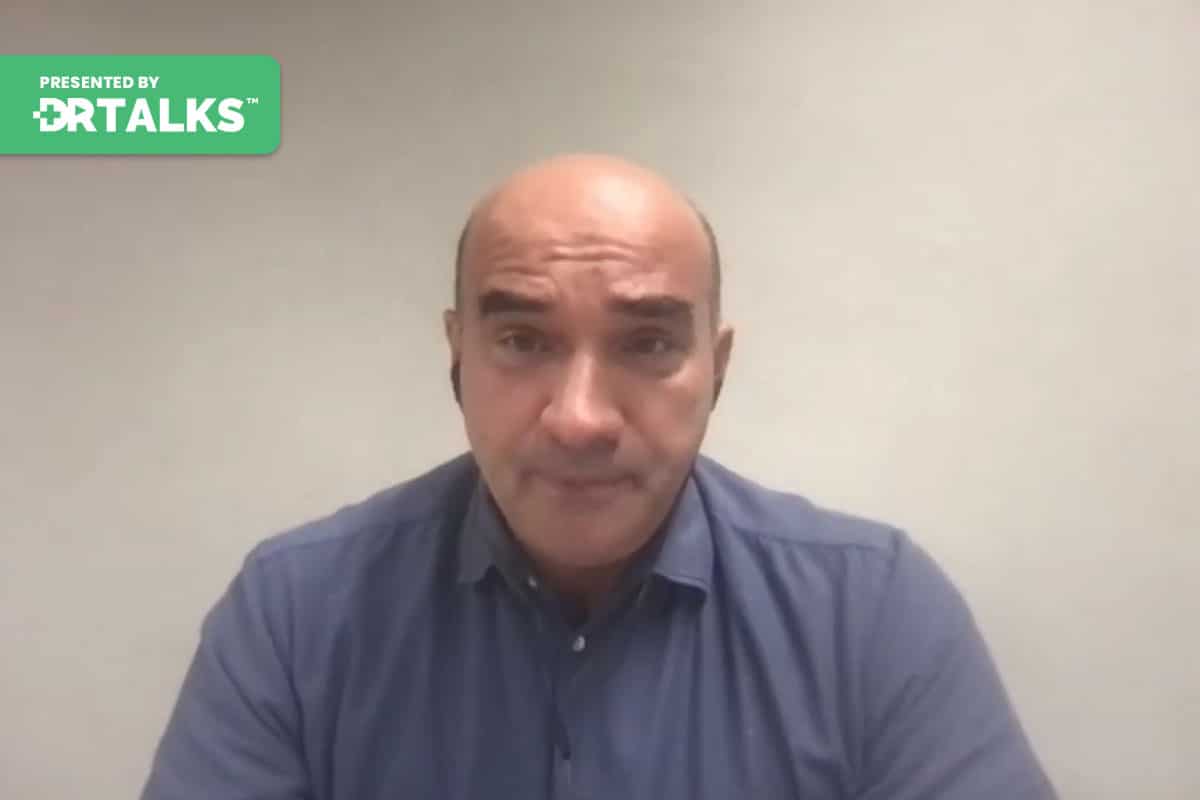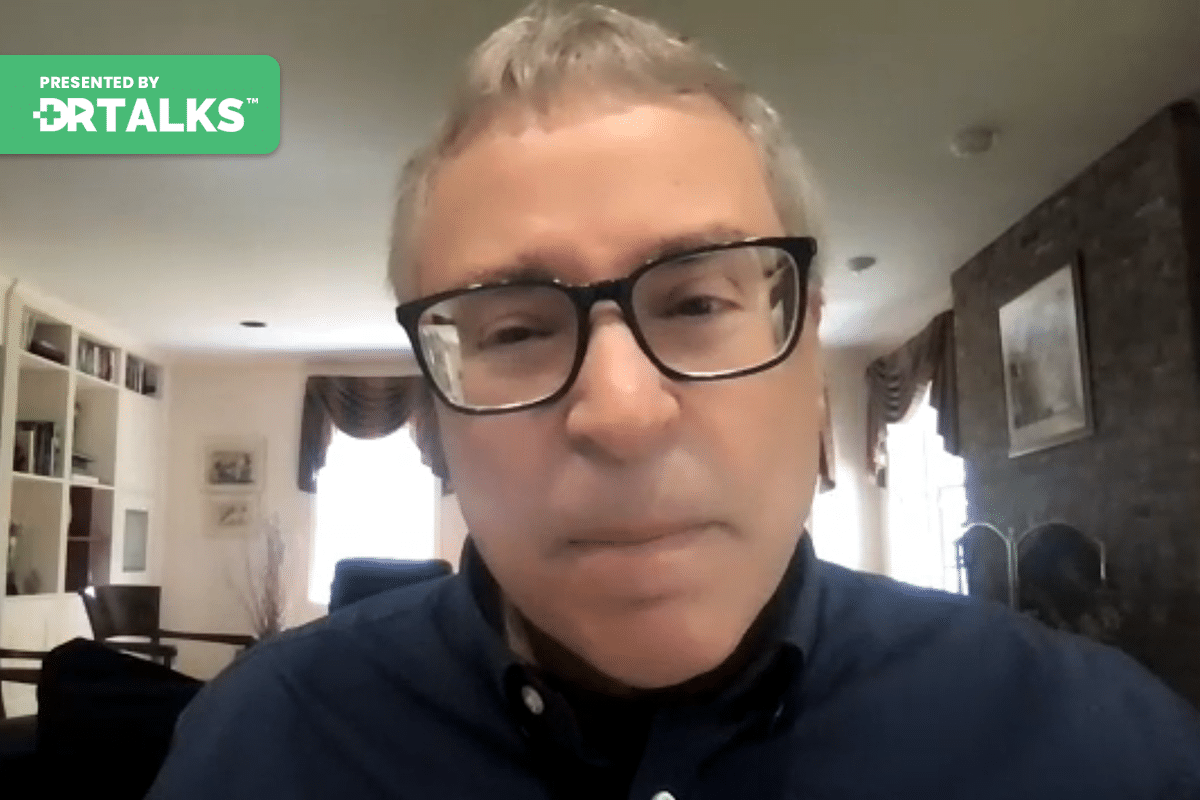Join the discussion below

Robert is full Professor at a leading medical school and Chief of Neuroradiology at a large medical network in southern California. In addition to being a practicing physician, he is author of over 200 peer reviewed scientific papers, 32 book chapters and 13 books that are available in six languages. Read More

Danny Grannick is the CEO and co-founder of Bristle Health, a company redefining oral health and care through the oral microbiome. Oral diseases – like cavities and gum disease - are the most prevalent conditions on the planet, even though they are largely preventable. These diseases are attributed to imbalances... Read More
- Oral inflammatory disease is associated with chronic systemic diseases
- The oral microbiome dysbiosis leads to disease and ultimately aging as well
- Steps to improve the oral microbiome
Robert Lufkin, MD
Hi, welcome to this episode of the Reverse Inflammaging Summit Mind and Body Longevity Medicine. And I’m your host, Dr. Robert Lufkin. Today we get to talk about a fascinating area of the oral microbiome and we’re joined by one of the experts in this field. Danny Grannick, who is the CEO of a company that specializes in consumer oral microbiome testing. I’m so happy to have you. Welcome to the show, Danny.
Danny Grannick
Thanks, happy to be here
Robert Lufkin, MD
Before we dive into this. Maybe tell us a little bit about more about your background and how you came to be interested in this space.
Danny Grannick
Yeah, I certainly didn’t see myself ending up in oral health, but I’m really glad that I did. So my background is originally in biochemistry. I got to the end of college and I think like a lot of people is trying to decide if I wanted to go the phd route or do something else. And that’s something else ended up being a relatively long career in the commercial side of genomics. So I worked with a sequencing company called Alumina and pretty much tackled every application under the sun, everything from the implementation of sequencing and oncology to an I P T. Obviously, you pick up microbiome space and it was a really exciting time to see genomics kind of transitioning from largely academic research into clinical and consumer applications. I always was keeping an eye out for that next kind of area and health that could be for lack of a better word disrupted and serendipitously. My now co-founder is a patient who probably like a lot of people listening has cavity that every time he sees the dentist and we were talking about that one day and really started digging into the standard of oral care, the root cause of oral disease and the relationship between oral and overall health. And that was kind of the genesis of bristle really trying to tackle what we see as, as a critical and overlooked component of health.
Robert Lufkin, MD
Yeah. Before we dive into the oral microbiome and all, maybe we could just set the stage with and tell us your views of kind of your own model, how you think about longevity and why people age, what is aging and then, and then we can see how the oral microbiome fits in with that.
Danny Grannick
Yeah, I mean, I think, you know, when we talk about longevity and aging, I tend to think of it from the health first perspective. So what is, how do we define being healthy? And for a long time, I think that we as patients are, we as consumers have defined being healthy as kind of whatever we think is the most important aspect for ourselves, of being healthy. And for some people that having a really good diet and managing kind of digestive health for other people, it’s exercising regularly and making sure that they feel or look like they’re in good shape for other people. It’s you know, making sure that they have really healthy skin.
And what I think has been missing is this idea of the reality that you know, our bodies, our ecosystems, everything kind of influences other components and it’s important to, to take time and to think about optimizing or just improving all of the aspects of health in order to be holistically healthy. So when we talk about things like aging, you know, I think that there’s, there’s kind of the biological aspect of ourselves, you know, over time, don’t function as optimally as they used to and, and there’s a host of interventions and things that you can do to slow that process down. And then I think that, you know, there’s also the psychological aspect of just you feel like things are slow, you feel like you’re more prone to illness or injury. And we’re trying to tackle, I think aspects both of those things just through the mouth.
Robert Lufkin, MD
There’s been a tremendous amount of interest recently in the gut microbiome. Obviously, we have microbiome is throughout our body which is the microscopic community that exists in various people but in various locations, but the gut microbiome is usually associated with our digestive system and the intestines. And all I’m wondering the oral microbiome . Is it reasonable to think of that as the first part of the gut microbiome?
Danny Grannick
Yeah, I mean, yeah. The gut microbiome is a really interesting environment and I think that it is, you know, it’s gained a lot of popularity because of its relation to various chronic conditions that a large amount of the population faces. But yeah, I mean, you know, when we think about the mouth at bristle, we call it the gateway to the body and the mirror of our health. You know your mouth is one of the most exposed organs that you have. It’s the entry point for pathogens. It’s where all of your food, all of your beverages pass through on their way to the digestive system. And it’s also in a lot of cases your first line of defense. So it’s this incredibly important component of our bodies. And again, it’s something that I think a lot of people, you know, when we think about oral care and when we think about our mouths, we, for the most part don’t think about it like that.
Robert Lufkin, MD
Yeah. So is the oral microbiome? Is it just an extension of the gut microbiome or is it different? How do the populations, what sort of, what sort of organisms do you see in them and how are they different?
Danny Grannick
Yeah. So the oral microbiome in the gut microbiome are very distinct in terms of the kinds of bacteria. There’s some overlap between the two, but for the most part, they are distinct in terms of the microbes that inhabit them. Mostly because they’re very different environments, right? Your mouth again, has a lot more exposure to oxygen to all of these different external factors. And it also has a lot of different environments that lend themselves to a very specialized species of bacteria. You can imagine that the kinds of bacteria that grow on the surface of your teeth are a lot different than the ones that might grow underneath your gun line that said there are a lot of bacteria that can pass from the oral microbiome to the gut microbiome.
There’s a lot of bacteria that can pass from the oral microbiome to other areas of our bodies. And we’ve seen that in research studies, demonstrating connections between oral pathogens and cardiovascular disease, diabetes and Alzheimer’s. So we do know that there is this mechanism of the things in our mouths, making their way to other parts of our bodies and potentially causing destruction there.
Robert Lufkin, MD
You know, we’ve talked about there’s a lot of attention being paid to inflammation as a driver as sort of a universal driver of aging. And you know, the word inflammation expresses that how does inflammation manifest in the oral cavity or how do you? And also how do you detect it in the oral microbiome?
Danny Grannick
Yeah, I mean, inflammation in the oral cavity is probably one of the most common conditions. We just call it gingivitis and periodontal disease. So, you know, pathogenic bacteria take hold in the oral microbiome. And when we talk about things like periodontal or gum disease, it’s bacteria that grow between your tooth and gum line that initiates an immune response that leads to inflammation. And that’s why, you know, people have things like in the most literal sense, gum inflammation. That’s why when you’ve lost in the morning, sometimes you’ll see blood. So, you know, there is this very direct relationship between the oral microbiome in oral inflammation. And then in other cases, those oral pathogens that I talked about that can make their way to other parts of the body also initiate a similar immune response and can lead to inflammation in those areas as well.
Robert Lufkin, MD
And people have commented that periodontal disease markers for periodontal disease track with aging, with increased aging, periodontal disease and tooth loss is a risk. And people have even suggested periodontal disease quantification as another type of biological clock. As you can tell how old you are relative to your chronological age that we’ve talked about before. If you seen, well, first of all, with periodontal disease, are there reliable markers? Like, I guess in a dental office we’ve all had our, our periodontal disease pits measured in all, is that consistent across dental practices? That would be a good way to do biological age or is it really user specific and
Danny Grannick
Yeah, I think if we think about the standard of dental care, so when you, you know, let’s picture a typical dental checkup, you’re going in and you’re getting an observational screening, you’re getting X rays and those methods are looking for the presence and the severity of symptoms. A common metric that we use for periodontal disease is something called pocket depth. And it’s literally the amount of space between your tooth and your gum line. And I think anything above, you know, three or four millimeters is when you start getting into the dangerous part of periodontal disease.
So, you know, we use symptoms first methods for characterizing disease. And I think that that’s very late in terms of the evolution of a condition, you know, the oral microbiome allows us to look at those causal bacterial pathogens. And I think that also shifts the way that we think about oral health in the context of the aging because we’re not necessarily gauging oral health based on the severity of symptoms, were actually gauging oral health based on the abundance and presence of certain microbes in the oral microbiome. All that said, there are really strong correlations. We know that as people age their risk for conditions like periodontal disease increases drastically. We know that there are a variety of other conditions in the mouth that also increased with age. Oral cancer being another example. And I think a big question is, you know, this chicken or the egg hypothesis is, is oral disease a result of aging is, you know, is your immune system weaker, making you more susceptible to oral conditions? Or could oral health actually be a contributor to faster aging, right? You’re weakening your immune system through more incidences of periodontal disease, through the introduction of more pathogenic microbes leading to inflammation leading to a breakdown of immune response and immune health.
Robert Lufkin, MD
And so it’s interesting you’re seeing these micro microbial markers through the microbiome test of periodontal disease before the pockets occur or, or you can anticipate it coming on. Is that right?
Danny Grannick
Exactly. Yeah. So there are canonical oral microbes that cause periodontal disease. And if we can detect them at the very earliest abundance, they may not have caused the damage that they would at a later stage.
Robert Lufkin, MD
And for those, are you in your population that you’ve studied with all the microbiome is you’ve obtained, have you seen a characteristic pattern of oral microbiome change with periodontal disease causing organisms over time? That would be possibly useful as a biological clock based on the microbiome.
Danny Grannick
Yeah, I think it’s an interesting intersection between so, so very real example. We’ve started doing some research around children’s oral microbiome and there are some astounding findings that we’ve uncovered. I think, you know, the most literal example is in Children, we will sometimes find relatively high abundance of those gum disease causing microbes, but obviously, no symptoms of gum disease. It’s also there’s something really interesting that the fact that, you know, for some reason, Children are a lot better equipped right to prevent the onset of symptoms. And maybe it is just the strength of the immune response for those pathogens or some kind of mitigating effect with inflammation. And then obviously, in the older population, it they may have the same abundance of microbes as somebody who’s younger, but the severity of symptoms is certainly worse. And on the flip side, we also do see some characteristic oral microbiome signatures as people age. So it’s kind of the inverse where the presence of certain microbes or an over abundance of certain microbes is correlated with certain age ranges.
Robert Lufkin, MD
Yeah, it’s fascinating some of the historical work that’s come out with sort of paleobiology where the oral microbiome has been measured on dental tartar on skulls that are tens of thousands of years old. And they one interesting thing was that they’ve showed that that the bacteria that cause dental carries the carry a genic bacteria seem to appear in humans about the time of the agricultural revolution, which was of course, when all the grains and junk food started, carbohydrates became a part of our diet over the last 12,000 years. Is there a similar signature change for periodontal disease that you’re aware of historically back in the distant past?
Danny Grannick
Yeah, I mean, I don’t know if there’s maybe such a, if there’s a defined inflection point. There is a great book by I’m Blanking on the name right now, but the author is Steven Lynn, who I think you probably know jaws by Steven Lin. You know, I think something that is really interesting to think about is the relationship between diet and jaw structure. So, you know, like I said before, there are very specialized microbes because our mouths are such diverse environments. And in maybe a more extreme case, as you start to lose teeth, there is a fundamental change in the environment and, and kind of those niches that are available in your mouth.
And when you lose all of your teeth, there’s a fundamental change in the structure of your jaw. And you know, I think that on the micro and macro scale of those changes, you are shifting how favorable that environment is for pathogenic microbes. So as we shift to eating softer, more processed manufactured foods, as we increase the amount of carbohydrates that are in our diet. You know, all of these things are contributing to a physical and a chemical change in, in the oral cavity that favors a lot of these pathogenic microbes.
Robert Lufkin, MD
Yeah. It’s fascinating how the idea that the food content and the increase of processed foods and junk foods and carbohydrates would actually over time change the shape evolutionarily. Speaking of our mandibles, that’s a whole whole conversation there. But well, getting back to inflammation in the oral cavity, there’s interesting interesting points to be made about how inflammation relates to other chronic disease because the recommendation that we’re seeing now that we didn’t used to give, but we’re seeing now is if you want to avoid Alzheimer’s disease, brush your teeth, if you want to avoid a heart attack, brush your teeth and there’s actually very solid scientific evidence why that is and even some cancers. So maybe you could talk a little bit about inflammation and oral microbiome and its relation to chronic diseases.
Danny Grannick
Yeah. So I think, you know, let’s take the two examples that you just provided, right, Alzheimer’s and cardiovascular disease. On the Alzheimer’s side, there was a lot of speculation for decades and in a lot of clinical correlations between the decline of oral health and the rise of the increase of cognitive decline. Kind of a weird way of saying it. But you know, as we age, there was the pattern that oral health would decline and in cases of cognitive decline, they would also notice rightfully so a severe decline in oral health. And the question was always, Is a cognitive decline that’s leading to maybe a lack of adherence for a typical hygiene regimens or is there something about a decline in oral health that can signal or is possibly contributing to more rapid cognitive decline? And there was a really pivotal study, I want to say in 2016, maybe a bit earlier, that looked at one of the most notorious oral pathogens peach in Dallas and Alzheimer’s patients.
And they actually uncovered that pigeon dot Alice was found, I think, in the cerebral spinal fluid and the brains of these Alzheimer’s patients and was, you know, it was hypothesized that peach intervals was contributing to more rapid cognitive decline in the onset of Alzheimer’s. And since then, there’s been a lot more research in the space and we’ve actually seen you know, to my knowledge, to therapeutics companies. So, Cortex, I’m and Keystone bio, which are both developing therapeutics for Alzheimer’s to slow the progression of that disease, but are targeting either directly or a byproduct of pigeon devil is called a compound called ginger pains. And it’s been amazing to see, you know, this connection between this notorious oral microbe and the development of therapeutics targeting, you know, that micro but actually going after an indication that’s unrelated to oral health.
So there’s certainly a connection between periodontal disease, oral microbiome and in cognitive decline. And I think we’ll only see more companies coming to market trying to target various pathogens in that space. And then on the other side, we look at something like cardiovascular health. And we for a long time, solve the same correlations between poor oral health status and higher risk for heart disease. Starting to look at the oral microbiome from a functional perspective. When you’ve begun to understand that similar to Alzheimer’s, there’s pathogens that can make their way to our arteries and start building a black and contribute directly to our risk for cardiovascular disease. And then on the other side, we’ve seen functional pieces of the oral microbiome that may contribute to risk for things like hypertension, high blood pressure and cardiovascular disease. And the best example of that is the role of the oral microbiome in nitric oxide production or the reduction of nitrates to nitric oxide. So, there are specific microbes in our oral microbiome that help reduce nitrates. And it’s a compound that’s found in leafy greens like spinach, it’s really high in beats and reduces it down into a compound called nitric oxide. And this compound is critical and regulating blood pressure. It reduces risk for hypertension plays a big role in inflammation or the reduction of inflammation. And we have found that people who lack these bacteria are at higher risk for increased blood pressure are at higher risk for hypertension. So, by increasing that these bacteria, we may actually have a direct impact on those conditions.
Robert Lufkin, MD
Yeah, before we get into nitric oxide, that’s a great area. I just want to underscore a couple of things you said before about this particular pathogen p ginger Vallis. This world bacteria in the oral microbiome. It’s linked as you said to Alzheimer’s disease and it was literally found in the brain of Alzheimer’s patients. And interestingly, as you said, that same organism peach in Dallas was actually found in the clots in the heart of the arteries of the people with the coronary artery disease had p change of Alice in there. So it’s so much, so many correlations with the oral microbiome and the disease. It also underscores that people used to just talk about the microbiome and everyone would assume you’re talking about the gut microbiome because that was one of the first one study.
But now, you know, we have the gut microbiome, we have the oral microbiome, we have the vaginal microbiome, we have the sinus, the para nasal sinus microbiome. And as you just pointed out, we now have the brain microbiome, the coronary artery microbiome. And when I went to medical school, we were taught, the body was basically sterile except for certain places. But what we’re learning is that there are other microorganisms, not just in the gut but throughout our bodies and in areas that we, you know, didn’t used to think so. So it’s fascinating anyway, back to nitric oxide. So, nitric oxide is a compound that it relaxes blood vessels, right? And it, and it decreases inflammation helps the immune system and it also affects the brain. So it fights neuro degeneration. So what about the micro oral microbiome and nitric oxide? What happens there again?
Danny Grannick
Yeah. So specific bacteria take, you know, a compound, it’s called nitrate and that is kind of the native compound found in a lot of leafy greens that you might eat. It’s found in a whole host of other things. And through a process called the anti salivary pathway, it ends up reducing nitrate into that compound. Nitric oxide, nitric oxide then makes its way into our, I mean across our body. So across our system and confers a lot of the health benefits that you just mentioned. So it makes its way into our bloodstream. It helps you know, increase or grow our blood vessels, reducing things like blood pressure and helps deliver more oxygen across the body. I mean, there’s this whole cascade effect of health benefits that are conferred to individuals when there are higher levels of nitric oxide available in the body.
Robert Lufkin, MD
So the nitric oxide is produced in the mouth by these, by these from food products, by bacteria essentially, right? Is it a gas or enzymes rather? And is it a gas or why in the mouth? Like, why isn’t done in the digestive tract or like other foods? What is it about the mouth? That’s so special.
Danny Grannick
It’s done in both, it’s done in, you know, there are microbes in the gut microbiome that do a similar function. It’s done in the mouth. There’s a small degree that’s done natively in the body. And you know, for us, the mouth is a really interesting place to look at because it is one of divas physically available places to close the loop on a low abundance of those microbes. So when we, when we talk about not necessarily holistic nitrate production, but if somebody does have a low abundance of of microbes in their mouth or maybe just low levels of nitric oxide in general, the mouth is a really, really accessible place to start building up those levels again because we can physically and biologically slash chemically removed pathogenic bacteria, we can shift the oral microbiome back to a state where there’s a higher abundance of those microbes that perform that function. And it’s kind of this great lever to increase nitric oxide production in a relatively short amount of time.
Robert Lufkin, MD
Yeah, you mentioned some foods, leafy greens for producing nitric oxide. What about changing the microbiome? What do you recommend for that to increase nitric oxide production.
Danny Grannick
Yeah. So, I mean, on the dietary side, just increasing your consumption of those kinds of food, there’s, there’s a lot of great supplements available. So, beet root gummies are on the market. There’s some interesting nitric oxide guns and other kinds of shoes. And we have found that just increasing the dietary intake of those increases the abundance of those bacteria because again, you’re set, it’s a prebiotic for those commencing species. And then if we’re talking about something more, more like seeding, the oral microbiome or reintroducing those species. Again, the mouth is a really cool place because there’s physical interventions that are available that allow you to remove bacteria. So you can’t, you can’t reach down into your gut microbiome and scrub it clean in the same way that you can brush your teeth, right? Or in the same way that you can implement tongue scraping or implement a better method for flossing. And all of those are available in the mouth. So we can help people implement changes in their hygiene and product regimen that physically reduced the amount of pathogenic microbes. While at the same time introducing commencing species such as the ones that perform nitric oxide production or nitrate reduction.
Robert Lufkin, MD
So before we get into the brushing flossing, tongue scraping those things, let’s take a moment and hit one more area. And that is this the association of oral microbiome with psychological or mental conditions. What’s the evidence there?
Danny Grannick
Yeah. So I think, you know, the connection between oral health and, you know, let’s, well, Steven, I don’t know if this is the right term, but as an umbrella term, we can stay mental health. You know, I think that the research there is a lot earlier but the patterns seem to mirror the ones that we saw with cardiovascular disease. With Alzheimer’s in that there are clear correlations and associations between declining oral health and declining mental health. And Steven, again, you can probably speak to this better than I can. But, you know, in depression, like one of the first things to go is oral hygiene amongst other forms of hygiene. But it certainly is the Hallmark characteristic. And I think that there are a lot of research opportunities to understand if, if the oral microbiome is playing a role in the progression or the acceleration of mental health decline or mental health decline is you know, potentially a driver of oral health decline.
But it would be great if, you know, if there was a way that we could leverage the oral microbiome are really just oral health in general to help somebody get back on the track of strong mental health. And you know, I think that we have this really exciting opportunity to potentially catch things like depression at the earliest stages through oral microbiome testing. If we can see that somebody’s oral health has been declining over time amongst a variety of other clinical and behavioral factors. It may be an indication that somebody needs to go seek mental health assistance or go seek care in that space when otherwise they might have avoided it altogether.
Robert Lufkin, MD
Yeah, it’s interesting the revolution in mental health now with Chris Palmer and other people that are looking at cutting out carbohydrates and going to a ketogenic diet and reversing some schizophrenia, some but not all cases but and major depression and looking at diet, do you see have you looked at diet with your micro oral microbiome? Is there a signature for ketosis versus a signature for junk food? And can you tell what a diet of persons on by their microbiome?
Danny Grannick
We’re working on it. So shockingly, the amount of research in oral health and the oral microbiome is severely lacking we diverging. But like I think a really relevant example is we published, well, we wrote a blog article looking at our internal data just asking, you know, we’ve been told to floss once or twice a day for decades. Now, how effective is it actually? So we looked at the frequency of flossing with the oral microbiome and oral health outcomes. And we found some really interesting insights. You know, I think the biggest one is that oral health are blossoming has a massive impact on the abundance of species of bacteria in their abundance related to halitosis or chronic bad breath.
We also noted that people who floss more frequently have a higher abundance of commence cell species in their oral microbiome. All interesting. But my, the key point here is I typed in flossing oral microbiome into pub med because I was doing some ancillary research. And for the first time in my life, I think zero results came up. So we’re talking about I mean something as I think fundamental as like an apple a day keeps the doctor away that has zero evidence. And zero research around its actual efficacy on oral health outcomes. And it was, it was kind of shocking to realize that, you know, to my knowledge, like we’re one of the first organizations to publish on that all that to say when it comes to things like diet, you know, similarly, there’s a shocking lack of research around the role that diet plays in oral health in the oral microbiome past, you know, obviously eating more sugar and eating more carbohydrates predisposes you to carries.
But beyond that, there’s not a ton of research that’s been done. So that’s a huge focus of the company is starting to understand. Are there differences in going back to our conversation around the dietary shifts over time? Are there differences between a vegan diet, vegetarian diet? Pesca Terry in a Mediterranean on oral health outcomes? And it’s something that we’re still investigating as a company.
Robert Lufkin, MD
Well, in our last few minutes here. Let’s get to some action items here. You’ve mentioned a couple of them. So, tooth brushing your teeth is good, right? Prevent Alzheimer’s and these other things, tooth brushing is good. How many times a day do you recognize? Recommend twice?
Danny Grannick
So at least 20 times. Yeah, at least twice. And with an electric toothbrush, we found some significant differences between electric and manual toothbrushes
Robert Lufkin, MD
And by electric. You mean like a sonic hair type ultrasonic wave brand, right? Okay. And then flossing floss every time you brush basically.
Danny Grannick
Yeah, I would say more. So the tipping point in our data is flossing, I think 4-7 times a week. So ideally somebody can hit once per day and that’s really when you start to see the benefits.
Robert Lufkin, MD
So at least once per day, but it won’t hurt if you do it whenever you brush your teeth, just floss, right? And that’s okay. Now, tongue scraping, I have to admit I’ve never tongue scrapes before but tell me about tongue scraping. What is that? When do I need? Do I need to start?
Danny Grannick
I would start immediately. I mean, tongue scraping is an amazing intervention and I think, you know, oral health is overlooked, but like the tongue is even more overlooked when we talk about typical oral hygiene routines. It’s also a breeding ground for various bacteria. So we, you know, a very real example is we looked at the bacteria that contribute to halitosis. And we’ve basically been able to bucket all of these bacteria into six types of halitosis. And one of those types is centered around bacteria that tend to grow on the surface of your tongue. And you can imagine that for somebody suffering from chronic halitosis with that type of halitosis, they can brush and floss as much as they want. But if they’re not addressing where the bacteria are living, which is the surface of their tongue, the condition is not going to improve. So tongue scraping is an amazing physical intervention for removing a layer of bacteria. And then if you complement that with something like an oral probiotic or your pre biotics, you know, you’ve, you’ve really given your oral microbiome a good chance to rebalance.
Robert Lufkin, MD
So I’m going on Amazon, I’m gonna search for tongue scraper. I order one. How many times do I do it? Do it when I brush my teeth and floss my teeth.
Danny Grannick
So once I would say, you know, once a day, probably first thing in the morning,
Robert Lufkin, MD
Okay? And just scrape it a couple of times. Is that it alright?
Danny Grannick
And it’s a great purchase. You buy one tongue scraper. It’ll probably last you your whole life.
Robert Lufkin, MD
Share it with the family, right? No. So and with the tooth, tooth brushing fluoride or no fluoride or does that? What’s your position on that?
Danny Grannick
Yeah, it’s definitely been a heavily debated topic for, for a long time. And I think there’s a lot of data and a lot of information that supports both sides. We’re, a data driven company and we’re still trying to sift through everything. But I think, you know, the reality of the situation is when we talk about oral health, an oral health alone, fluoride has been shown to be an effective intervention in reducing the risk for carries. I think on the other side of it, there are other compounds that are coming to the market. So, hydroxy appetite being kind of the next leader that have been shown to be equally effective alternatives. So at the end of the day, used toothpaste, it’s effective. I think for now, I would say, you know, personal preference and in your own research should determine what option you go with, but go with one of those options.
Robert Lufkin, MD
And then the last, the last oral hygiene question would be on mouthwashes. We’ve seen some articles coming out with alcohol based mouthwashes of basically harming the microbiome, the nuclear option so called and where you want, where you decrease nitric oxide production and you harm things. What’s your position on mouthwashes?
Danny Grannick
Yeah. So we do think that mouth rents used, you know, alcohol based mouth brands, antimicrobial, antibacterial prescription, mouth brands used regularly is extremely harmful to the oral microbiome. It puts you at higher risk for oral disease down the road. And there have been research studies that have shown that increased use of those mouth rinses has been associated with increased hypertension, higher blood pressure, increased risk for cardiovascular disease. So there definitely is there is a disruption of the world microbiome when you are continually daily on a daily cadence, wiping out almost everything that’s living in your mouth and opening it up for other pathogens to come in. I think that there are more acute use cases for mouth rinses if you’re tackling a specific condition and you know, you want to eliminate those pathogens before you start receding with beneficial species. It’s a great use case. But using mouse brains every day, I think for the most part is more harmful than beneficial, especially if you have a really good oral hygiene routine that you’re already implementing.
Robert Lufkin, MD
Well, this has been a wonderful conversation. How can people reach you, Danny on social media or your website?
Danny Grannick
Yeah. So social media and the website is all going to be Bristol Health. So people can come to our website at bristlehealth.com. They can follow us on linkedin, Twitter, Instagram, Tiktok, Facebook at Bristol Health. There’s tons of research that we have published both internally and just sourced externally if you go to our blog. So there’s a lot of interesting content, all of the things that I talked about with cognitive decline with cardiovascular disease and nitric oxide, all available on our website. And if there’s other points that you’re interested in, reach out and we can do some digging.
Robert Lufkin, MD
Great. Well, thanks so much for spending an hour with us today, Danny. And thanks for all the work you do. But most of all, thanks for teaching me, turning me into a tongue scraper that I’ll add to my personal hygiene regimen.
Danny Grannick
Your friends, your partner’s, they’ll thank you.
Downloads










